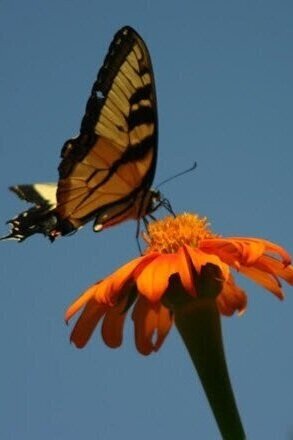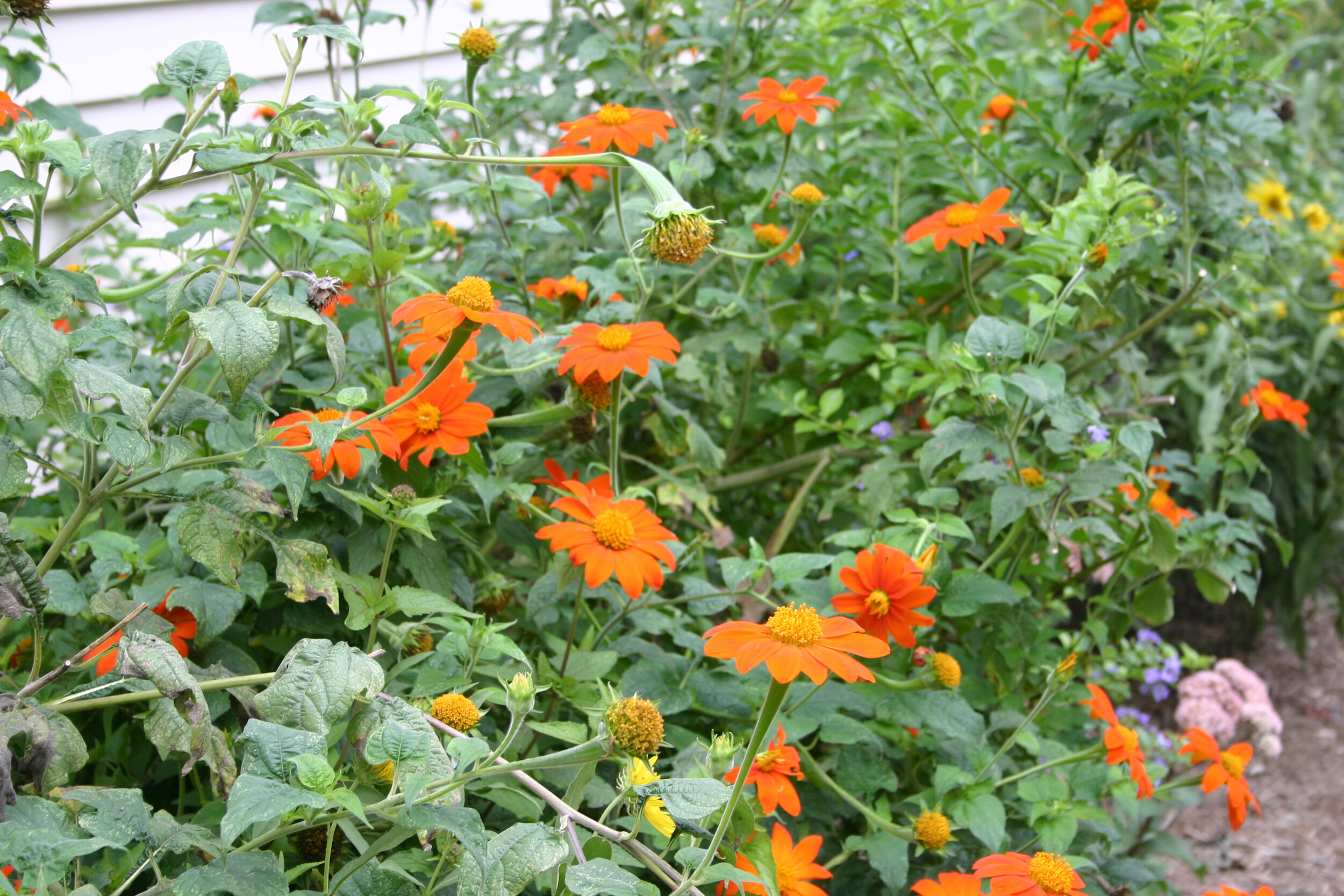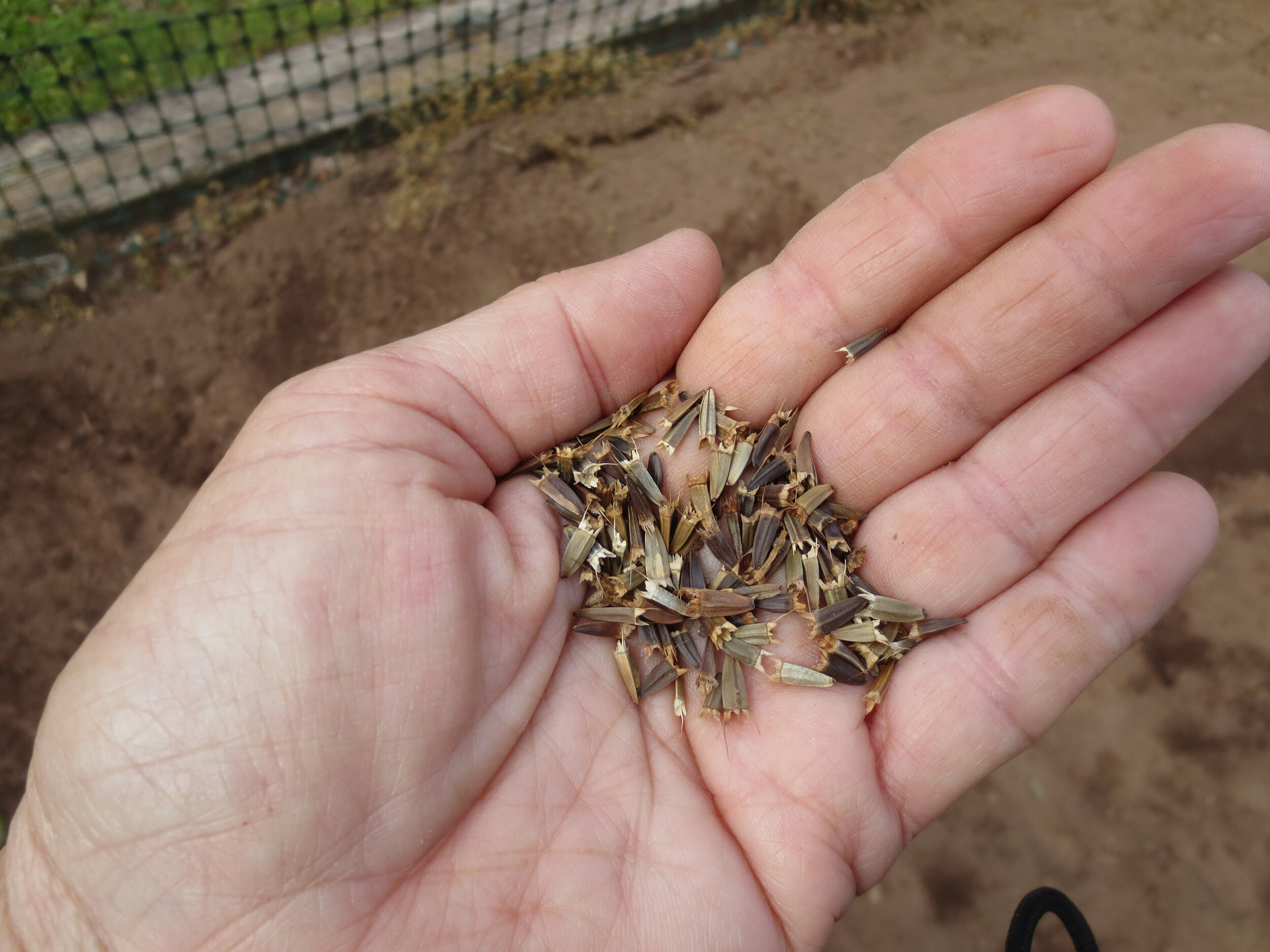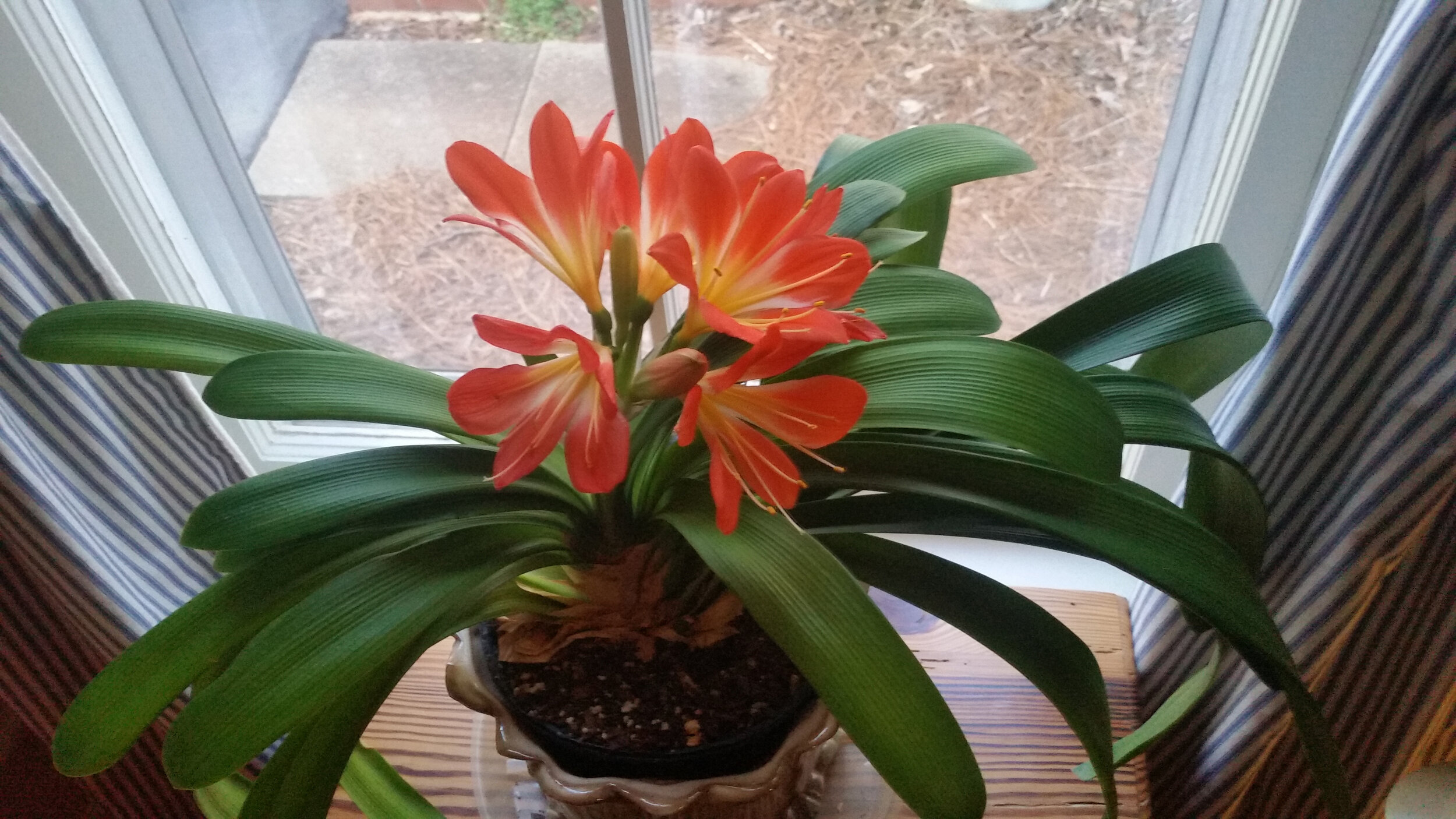Shrubs and perennials encompass the backbone of my garden, but a few annuals ensure that there is something in bloom throughout the entire season. Tithonia, Mexican Sunflower, is a gorgeous annual for the back of the border. It starts blooming mid-summer and flowers all the way to frost.
Tithonia is great for a pollinator garden.
Tithonia (pronounced tie-THO-nee-ah) can be started indoors to get a jump on the season, but is easily grown from seed. Baby plants resent root disturbance; use peat pots to reduce transplant shock. When peat pots are planted into the flower bed, be sure that no part of the pot extends above soil level since any portion above ground will wick moisture away from the roots and into the air. Tear off a strip around the top if needed. Plant in full sun. These Mexico natives love the heat and are drought-tolerant. Tithonia does best in well-drained, infertile soil. Rich soil will produce floppy, weak plants with few flowers.
Tithonias grow very rapidly, reaching heights of 3 to 6 feet, with a width of half that. I received my first 2022 seed catalog this week, and was delighted to see a new, dwarf form. ‘Fiesta del Sol’ is supposed to top out at two and a-half feet, which will make it easier to incorporate into flower beds. Most cultivars have flowers with deep, rich orange petals around a yellow center. Red or gold-flowered varieties are available, too. Cut flowers will last a long time in the vase if care is taken to avoid crushing the stems. The fuzzy stems are hollow, which means they can break if sited in an especially windy area. The ease of culture, the bright flowers, and the fuzzy stems mean this is a great choice for a child’s first garden. As a bonus, the flowers are attractive to bees, butterflies, hummingbirds, and a host of pollinator insects. They are not plagued by diseases. Deer rarely dine on them.
Tithonia used as an annual hedge, along with other fall-blooming flowers.
Tithonia seeds are large enough for children to handle easily.






